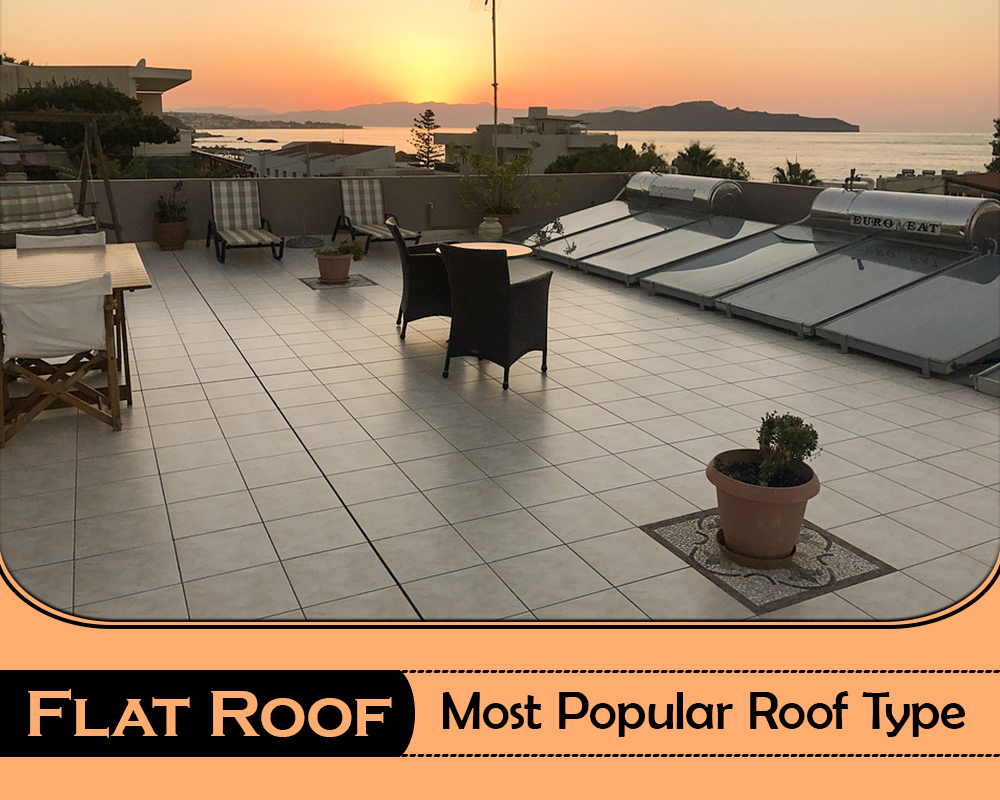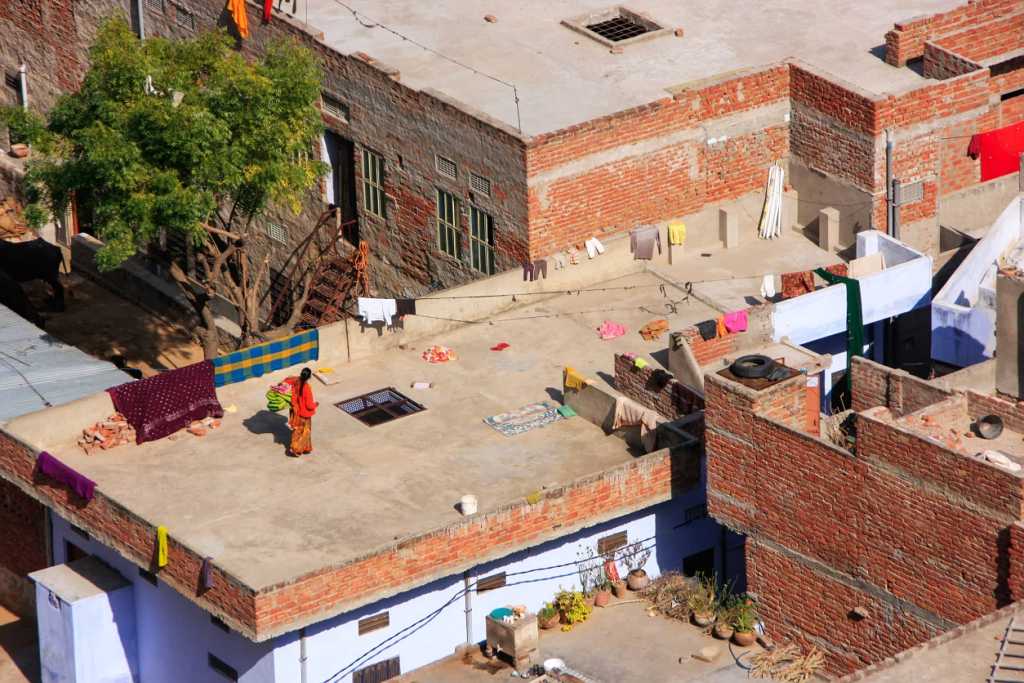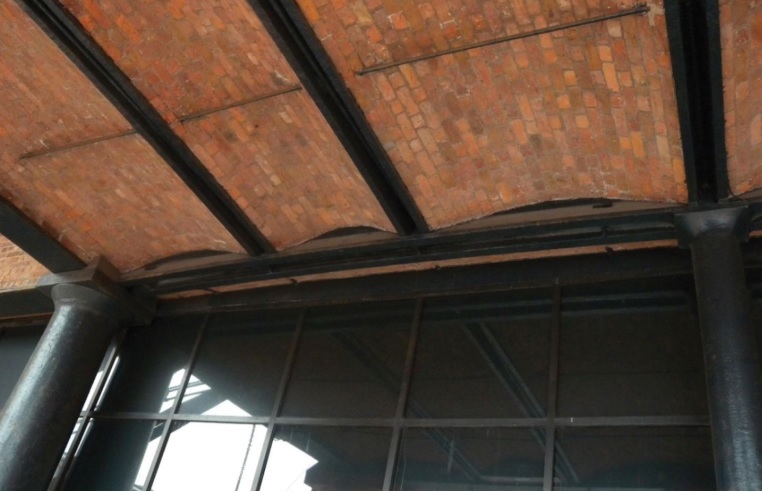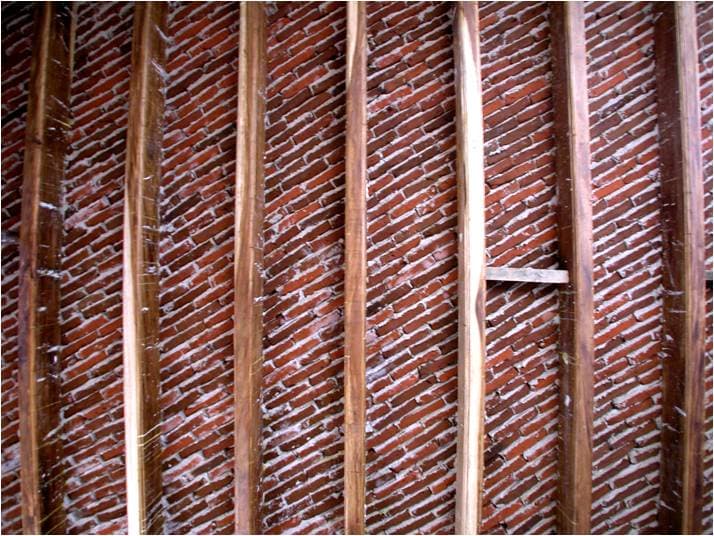
It was the need of roof that led the man to discover home. Hence good roof is the first and for most priority for any house. Nowadays, roof do a lot more than just serving the most basic purpose of protecting a house and its occupants from the outside elements. Its basic object is providing shelter to your house. Roof protects your house from natural calamities such as wind, heat, rain, snow, etc.
There are different types of roof used like gamble roof, shell roof, sloping roof, etc. Therefore, choosing the right roof type is essential.
Basically, two different types of roofs are popular: Flat Roof and Sloping Roof. For the sloping roof, we have already written a detailed article. Here we have provided some basic information on flat roof construction.
We have also written an article on basic information single and double roof.
Let’s take a look at the basics of flat roof construction.
Flat Roof or Terrace Roof
Flat roof is amongst the most commonly observed roof types. A roof which is has a nearly flat surface i.e. angle to the horizontal less than 10º is known as flat roof. It is also popular as a terrace roof. Flat roof house is getting more popular due to its simple pleasing appearance and multiple use options. Flat roof design is so simple that it can be used for a various purpose such as celebrating family functions, roof gardens, drying yards, play grounds, kite flying, evening walk, etc.

Benefits of Flat Roof
- Flat roof construction is simpler than other different types of roof.
- It provides better light, ventilation and good appearance to a house consistent with economy.
- Flat roof posse’s good insulation properties. In hot climate, it keeps out the heat from rooms during day time, and in cold climate, it keeps out cold.
- Flat roof house design is such that it requires lesser area of roofing material than the pitched roof and hence economical.
- In flat roof design, both sides are flat, so it doesn’t need any false ceiling.
- Flat roof can easily cover a building of any horizontal dimensions.
- In multistory house or apartment, the flat roof is only choice, since overhead water tanks, TV antenna and other services are located on the terrace.
- In flat roof house design, the construction of the upper floor can be easily taken up when the necessity of upper floor arises. While the same cannot be done in case of sloping roof.
- Flat roof construction has high initial cost but construction and maintenance of the flat roof is simpler than other types of roofs.
- Flat roof design is very simple therefore you can make any repair with this type of roof if needed.
- The flat terrace can be used for various festivals, social gathering, events, etc. like for celebration of kite festival, birthday party, walking, gatherings on holi, etc. and for drying cereals or pulses, clothes, etc.
Drawbacks of Flat Roof
- Flat roof house construction is unsuitable at places where there is heavy rainfall and heavy snow fall.
- It is difficult to locate and repair a leak in flat roof or terrace roof.
- The self-weight of flat roof is more therefore the sizes columns, beams, foundation and other structural members are heavy.
- It is vulnerable to heavy temperature variations, especially in tropics, due to which cracks are developed on the surface. These cracks may lead to water penetration, leakages or dampness later, if not repaired on time.
There are also other causes of cracks in your house on which we have written detailed article.
Different Types of Flat Roof
01. RCC Roof or Reinforced Brick Slab Roof
RCC roof is one of the most widely used flat roof types in residence. RCC roof is constructed in a similar way as RCC floors except that they are required to be protected against weather elements. This type of roof is more durable as compared to other flat roof types.

02. Precast Concrete Roof
As the name suggests, the precast concrete roof is precast in the factory and then installed at site. It is the most popular type of flat roof used nowadays. It saves time and less labour is required.

03. Jack Arch Roof
Jack arch roof was very common and popular in north India. This flat roof type is leak proof and capable of resisting shocks and vibrations. However, due to its wavy under surface and tedious construction, it has become unpopular and now very rarely used.

04. Mud Terrace Roof
Mud terrace roofing is suitable where rain fall is less. This is most commonly adopted in village areas. The terrace is made with white earth mud containing large percentage of sodium salt. Mud terrace roof can be provided either on tiles or on wood boards. It provided good insulation against heat and therefore keep the house cool. We have already written detailed information on mud terrace roof in our recent article.

05. Madras Terrace Roof
Madras terrace roof is also known as brick jelly or composite roof. In Madras terrace roof construction, brick is a major material forming the terrace and different materials used in its construction such as brickbat, teak wood joist, concrete, etc. It is popularly used in south India.

Surface Drainage of Flat Roof
The shallow slope on flat roof is necessary to encourage rain water to flow towards rain water gutter or outlets, to avoid ponding. Where there is no slope or fall or a very shallow slope, it is possible that rain water may not get drained from the roof. Good water proofing and adequate height of parapet are must to prevent to leakage and for safety and security respectively.
Make adequate provision of lighting (power) on terrace and also water for occasionally cleaning. As you can see, there are multiple benefits and drawbacks of flat roof. So, make sure whether the flat roof design is suitable for your house or not according your requirement.
Also Read:
Rafter and Classification of Rafter
What is the Composite Roof Truss?






























